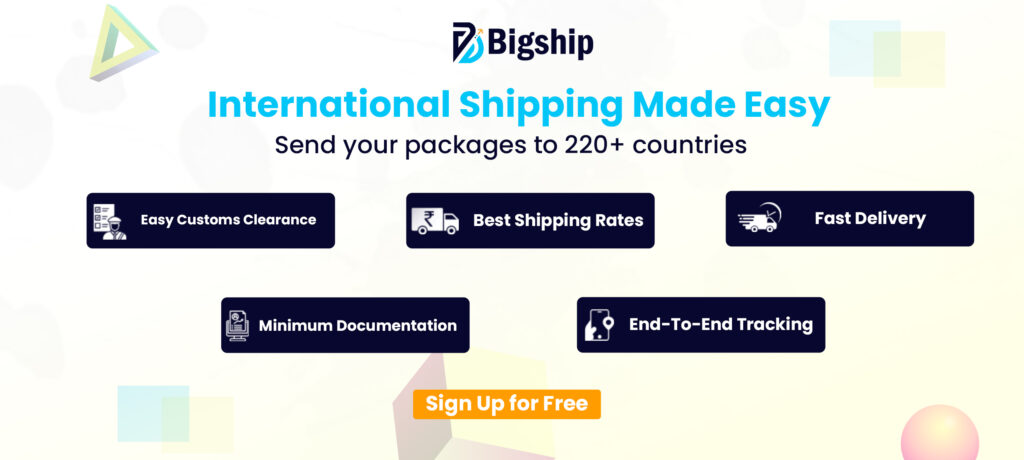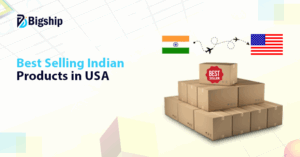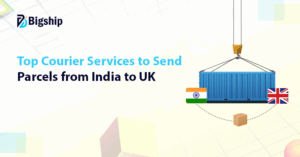When you deal with goods across cities or countries, terms like FOB shipping and FOB shipment often come up. These terms decide who pays for transport, who carries the risk, and when ownership changes hands. Many buyers and sellers use FOB in their contracts, but not everyone understands what it really means. A small detail in an FOB agreement can change costs, risks, and even delivery timelines. If you trade goods, this is something you cannot afford to miss.

Let’s break it down in simple words so you know exactly what FOB incoterm in shipping is and why it matters to you as an exporter.
What is FOB in shipping?
FOB stands for Free on Board and it an incoterm that tells you the exact point where the responsibility for the goods changes. Usually in FOB, the buyer and seller agree on when the ownership and liability move from one to the other and is applied to international trade.
Under FOB, the details are written in contracts or shipping orders. It mentions the delivery point, payment terms, and who pays for freight and insurance. It decides when costs, risks, and control of goods shift. The term also affects prices, transport methods, insurance, customs duties, and even legal issues.
What are the types of FOB?
There are two main types of free on board in shipping. These are FOB Origin and FOB Destination.
FOB Origin: In Free On Board Origin, the buyer takes responsibility the moment the goods leave the seller’s location. The buyer also takes care of the shipping costs and risks from that point.
FOB Destination: In Free On Board Destination, the seller stays responsible until the goods reach the buyer’s location. The seller handles the shipping costs and risks during the journey.
Difference between FOB Origin and FOB Destination
Here’s a clear distinction between Free on Board origin and destination.
| FOB Origin | FOB Destination |
| The buyer is responsible for the transportation cost from the seller’s location to the final destination. | The seller is responsible for the transportation cost till it reaches the buyer’s location. |
| Buyer arranges and pays for shipping from seller’s place. | Seller arranges and pays for shipping until delivery at the buyer’s place. |
| Price is usually lower as it excludes transport beyond seller’s place. | Price is usually higher as it includes transport to buyer. |
| Risk passes to buyer once goods leave seller. | Risk stays with seller until goods reach buyer. |
Benefits of FOB Origin
FOB Origin can work well for buyers who want more control. Sellers benefit too, as they pass on many responsibilities to the buyer. Let’s discuss the benefits of free on board origin from the perspective of both buyer and seller.
Buyer’s benefit
- Buyers can choose carriers and routes to match budget and delivery time. Also, they have the control to cut costs wherever possible.
- Buyers take on risk from the point of origin and can also select the insurance provider and coverage.
- Buyer works directly with carriers for faster and better-coordinated deliveries.
- Buyer has the freedom to negotiate costs and terms with carriers.
Seller’s benefit
- Sellers can pass shipping costs and duties to the buyer. They can focus more on selling.
- Seller’s liability minimizes once the goods leave their place.
- Sellers have less shipping work to manage, resulting in faster order turnaround and more focus on production.
Drawbacks of FOB Origin
- The buyer takes full risk for damage, loss, or delays once goods are loaded for transport.
- Large shipments or long distances can make FOB charges higher for the buyer.
- Extra costs like insurance, customs clearance, and paperwork fall on the buyer.
Benefits of FOB Destination
FOB Destination gives sellers a chance to offer better service by staying responsible for goods until they reach the buyer. Also, buyers receive the goods before taking ownership, which lets them check the condition before accepting. Let’s explore the free on board destination benefits for both buyer and seller.
Buyer’s benefit
- For buyers there is no upfront shipping payment. The shipping cost is part of the purchase price.
- For the buyer there is less paperwork and planning as the seller arranges transport.
- Seller carries the risk until goods reach the buyer’s location.
Seller’s benefit
- The seller manages shipping costs and negotiate bulk rates with carriers.
- The seller keeps control of goods during the entire journey.
- The seller handles shipping directly and resolve issues faster.
Drawbacks of FOB Destination
- The seller stays responsible for goods until they reach the buyer. Any loss, damage, or destruction in transit becomes the seller’s problem.
- Issues during shipping must be handled by the seller, including replacing or refunding damaged goods.
- To recover expenses, sellers may increase the final price, which can make their offer less competitive.
Example of FOB in shipping
Let’s make the concept of the incoterm FOB more clear through an example. Suppose there’s a company in Mumbai selling around 2,000 handwoven rugs to a buyer in Los Angeles, USA. The contract says FOB Origin. In this case, the seller in Mumbai prepares the rugs, packs them, and loads them onto the ship at Mumbai Port. Once the rugs are on board, the seller’s job is done. From that moment, the buyer in Los Angeles takes full ownership and pays for all shipping costs, including freight, insurance, and customs clearance. Any risk during transit is also on the buyer.
Now, if the same deal was FOB Destination, the seller in Mumbai would remain responsible until the rugs reach the buyer’s warehouse in Los Angeles. The seller would handle freight, insurance, and customs, and also bear the risk until delivery. The buyer would only take ownership after receiving and checking the rugs.
Key terms you should know in FOB shipping
FOB shipping can work in many ways, but it’s important to understand the terms used in such agreements. These terms decide when the responsibility for goods changes hands and who pays for different costs.
FOB Shipping Point: It is also called FOB origin, which means the buyer takes responsibility as soon as the goods are loaded onto the transport at the seller’s location.
FOB Shipping Point Cost: The seller pays costs until the goods reach the port of origin. From that point, the buyer covers freight, customs duty, taxes, and other charges.
FOB Destination: In this case, the seller keeps ownership until the goods reach the buyer’s location. Only then does the responsibility shift to the buyer.
FOB Destination Cost: The seller pays for transport until the goods reach the buyer’s location. After that, the buyer takes over any further costs.
Freight Prepaid and Allowed: The seller pays the freight charges and stays the owner during transit.
Freight Prepaid and Added: The seller owns the goods and pays the freight bill but adds that cost to the buyer’s invoice after delivery.
Freight Collect: The seller owns the goods while they are in transit, but the buyer pays freight charges upon receiving the shipment.
Freight Collect and Allowed: The seller pays freight charges while the goods are on the way. Once the buyer receives the goods, they reimburse the seller for those charges.
Key Takeaways
- FOB shipping defines the point where responsibility for goods shifts from seller to buyer.
- In FOB origin, the buyer takes ownership once goods are loaded for transport.
- In FOB destination, the seller keeps ownership until goods reach the buyer’s location.
- The incoterm FOB decides who pays for freight, insurance, and customs charges.
- These terms also define who bears the risk of loss or damage during transit.
Conclusion
FOB in shipping is more than just a line in a contract. It decides when costs, risks, and control of goods change hands between buyer and seller. A clear FOB agreement avoids confusion and helps both sides plan better. Whether it is FOB Origin or FOB Destination, the terms must be understood before the deal is done. By knowing how an FOB shipment works, you can protect your interests and manage trade in a smarter and more confident way.
FAQs
What does FOB mean in shipping?
FOB stands for Free on Board. It tells you the point where the responsibility for goods moves from the seller to the buyer.
What does FOB Origin mean?
FOB Origin means the buyer takes responsibility for goods as soon as they are loaded for transport at the seller’s location.
What does FOB Destination mean?
FOB Destination means the seller stays responsible for goods until they reach the buyer’s location.
Why are FOB charges important?
They decide the total cost of getting goods from seller to buyer and help in comparing different shipping arrangements.





